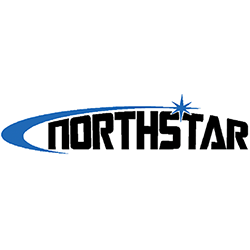Observer Name
Lanza & pgombert
Observation Date
Sunday, March 24, 2024
Avalanche Date
Sunday, March 24, 2024
Region
Salt Lake » Neffs » Thomas Fork
Location Name or Route
Thomas Fork
Elevation
8,700'
Aspect
West
Trigger
Skier
Avalanche Type
Soft Slab
Avalanche Problem
New Snow
Weak Layer
Density Change
Depth
10"
Width
200'
Vertical
350'
Comments
My partner and I started from the Neff's trailhead around 1000, reaching the aspen grove at 8000’ in Thomas Fork around 1300. On our way up, we noticed abundant natural activity in the top 2-5” of snow, appearing to run on a density inversion from colder, lighter snow overnight. Most if not all of the naturals observed were connected slabs. Between 1300 and 1400, PI picked up to 1-2”/h and maintained high rates until we topped out on Wildcat Peak around 1600. While breaking trail up the W-facing ramp to Wildcat, we remotely triggered a number of small terrain features on the same density inversion, with slides up to 6” deep. We noted that the activity was very sensitive to slope angle, with a tipping point around 35 degrees. Abundant cracking was also noted. Given the observed instability, we bailed on plans to ski any steeper lines and decided to take low-consequence terrain back down.
We skied the low-angle ramp together in great snow. At the bottom of the ramp, we worked slightly skier’s right towards a steeper rollover, which we were OK with skiing due to low consequence. We ended up further right than I intended, but I thought (based on a couple times I skied it last season) and it looked like the chute below us was wide and relatively short. We agreed to ski it one at a time and I dropped first. I wasn’t sufficiently careful or on guard and I carried too much speed over the rollover into the chute. I immediately realized that the terrain was steeper, more sustained, and higher-consequence than we’d planned on. Since I was already over the roll, I cut to the safest spot I could see, on a slight sub-ridge uphill of a tree. As I stopped, the slab broke 6-8’ above me 6-10” deep and 10-20’ wide. The crack propagated downhill of me and around some rocks to make the full slide 1-200’ wide. The slab was very soft and light and the snow didn’t get higher than boot-top as it washed past me; I wasn’t carried or pushed and didn’t even feel any real force on my skis. I radioed the situation to my partner, who skied to me. We then proceeded one at a time down the bed surface and debris, which generally didn’t seem deep enough to bury someone but could’ve been in spots. The slide ran 3-400’ vertical on a W aspect at 8500’.
After regrouping at the bottom, we had one more rollover below us. We opted to ski the lower-angle shoulder skier’s right, but I did put a ski cut in above and right of the steeper (40+ degree) portion of the roll. This pulled out a 100-150’ wide, 6-10” deep slide which ran 150’ into the flats. While descending lower into Neff’s, pretty much every single terrain feature >35 degrees that we skied past slid 4-10” deep. All the slides ran on what appeared to be a low-density layer of stellars with a surprising amount of energy and connectivity. Wind was not a factor in most of the slides; this was a storm slab issue.
My partner and I extensively debriefed the first, unintentional slide that we triggered, and identified 3 factors that lead to a closer call than we’d’ve liked:
- Terrain familiarity. My partner had never skied up Neff’s before and I had a false sense of familiarity from having skied this chute a couple times last year in safer conditions & a much deeper snowpack. The chute was much longer and steeper than I remembered and there are substantially more exposed rocks and trees. Since we stopped in the low-angle terrain above it instead of at the rollover, neither of us could see that the terrain was significantly gnarlier than we were anticipating.
- Risk compensation. Since we’d declined to ski the steeper lines we’d thought about and agreed to ski mellower terrain, we didn’t have our guards as up as they should’ve been. Additionally, party lapping the low angle ridge gave us a false sense of safety and contributed to our guards being down.
- Moving too quickly. If I had approached the rollover more slowly I would’ve been able to stop before I went over it. Additionally, moving too fast higher up put us further right than I’d intended, which is why we ended up skiing the chute. Taking time to double-check our routefinding and slowing down when approaching rollovers would’ve prevented this.
Overall, this wasn’t a particularly scary slide but it could’ve been serious with a deeper slab, and we both agreed we would’ve preferred not to ski the chute that slid. The second slide, while also big, was anticipated, triggered from a safe location, and presented no hazard.
Photos below show cracking on the skinner, the first slide from where I was standing when it slid & below, then the 2nd slide from skier's right and below. My partner is standing on the bed surface of the first slide in the pics but wasn't there when the avy occurred.
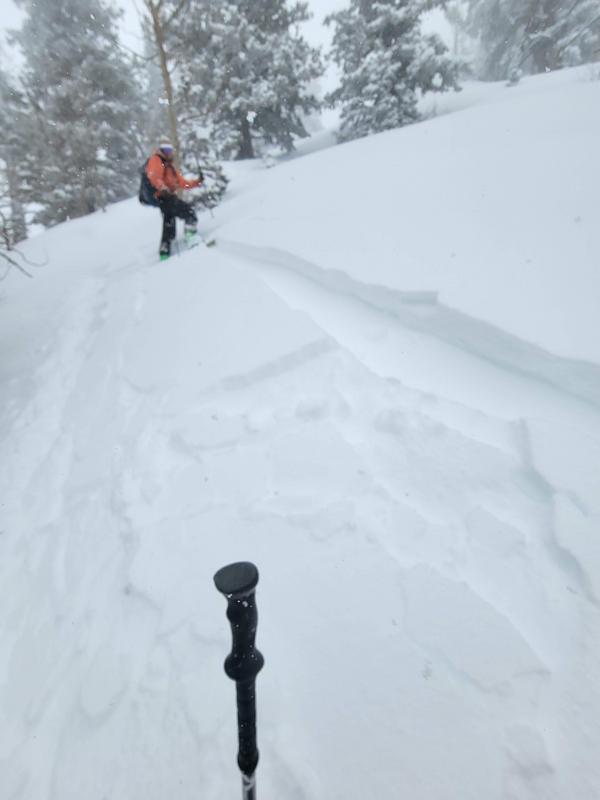
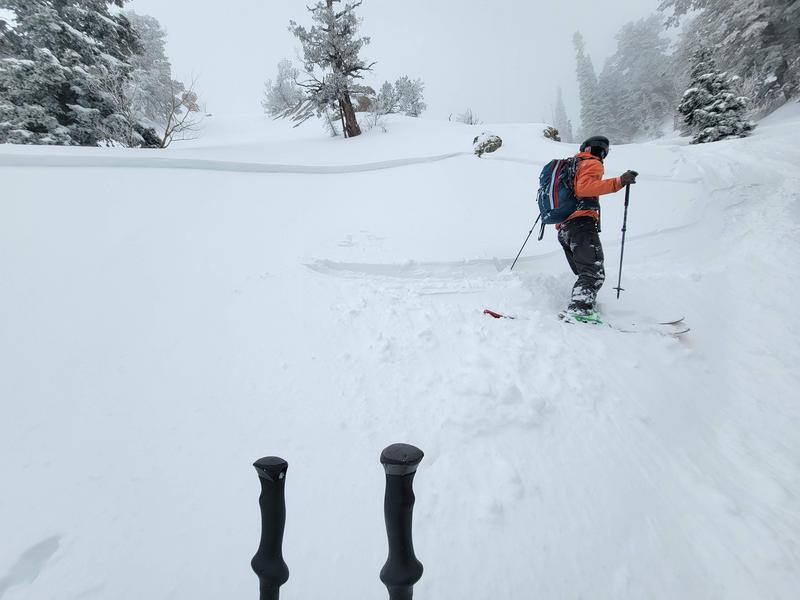
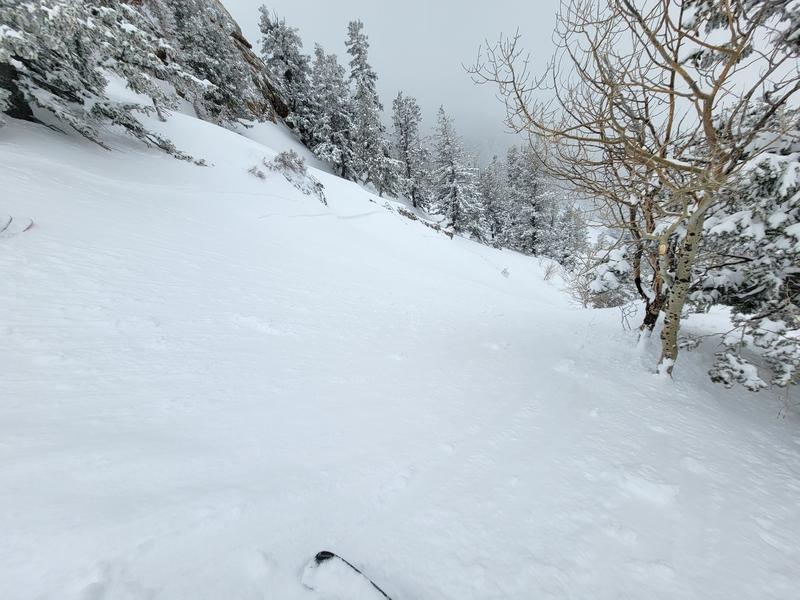
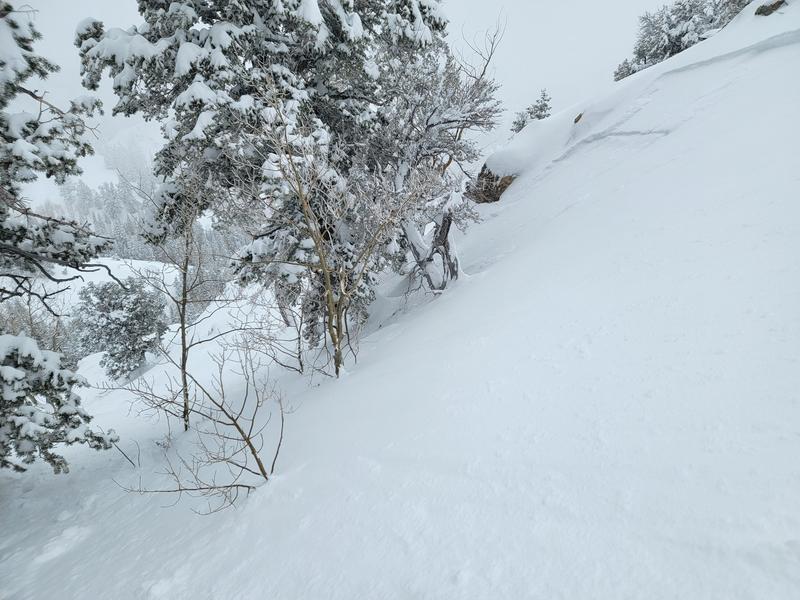
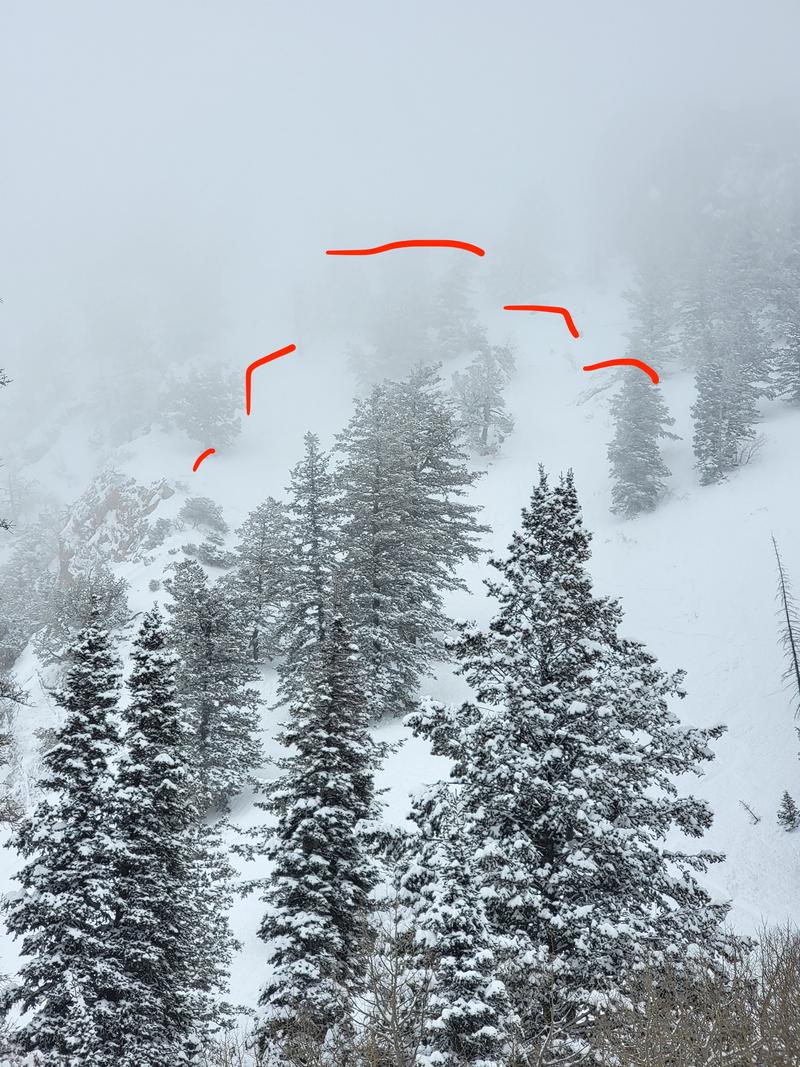
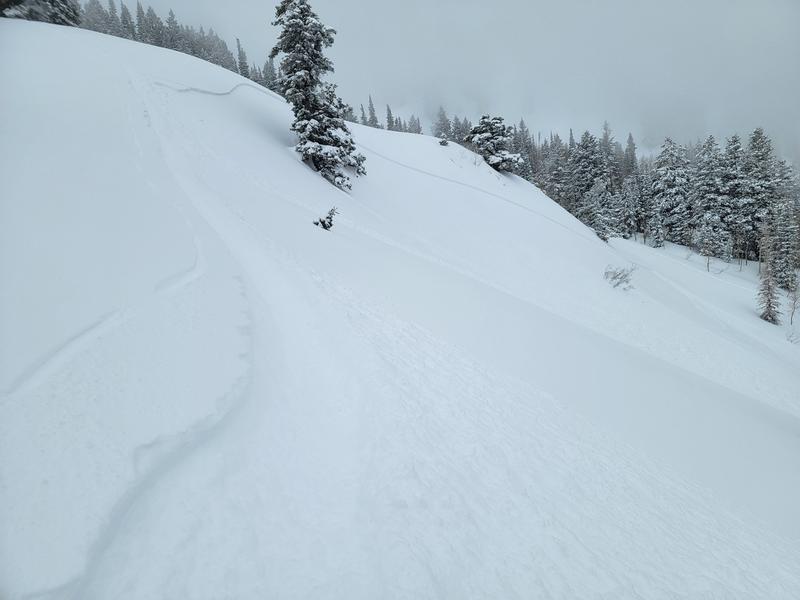
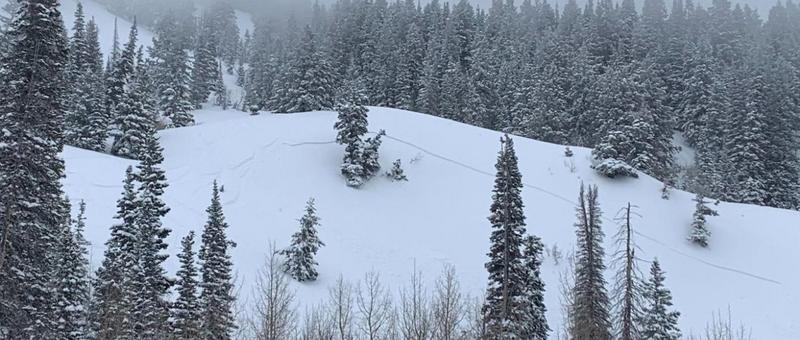
Coordinates



